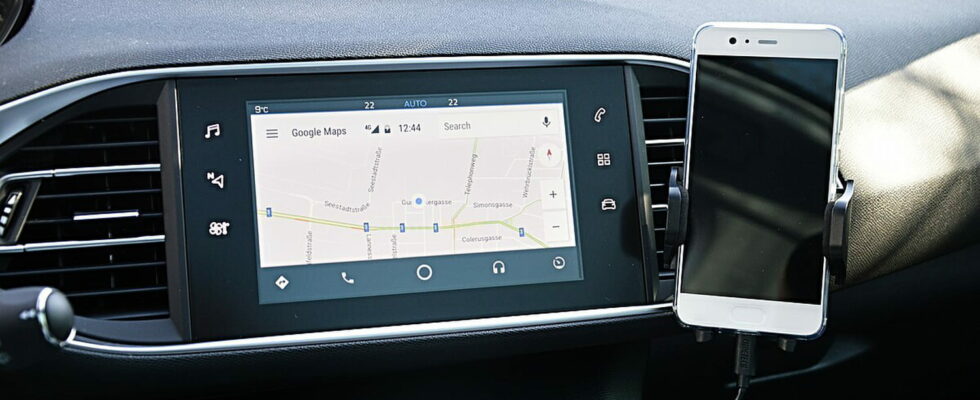Google Maps users on Android Auto benefit from a new feature: the integration of real-time incident reports from Waze. A way to make journeys more precise by relying on the large community of the Israeli app.
A few days ago, Google Maps integrated Waze incident reports into its mobile application. As reported Android Authorityit is now Android Auto’s turn to benefit from this addition. Thus, Google Maps drivers will be able to see alerts shared by Waze users, such as police checks, traffic jams or accidents, directly from their dashboard. This should make journeys more relevant!
Android Auto: integrated incident reports and police reports
Google Maps is regularly criticized for lagging behind Waze when it comes to driving, particularly in real-time reporting. This lag is even more visible on platforms like Android Auto and CarPlay. But their developments now go hand in hand, the American giant having bought the Israeli application in 2013 and merged the development teams in December 2022.
The two mapping services now benefit from the strengths of each: Google Maps provides the tons of data collected by the firm’s services, while Waze relies on its participatory community of 151 million users, who point out the limitations speed, accidents or even danger and road control zones. In short, everyone is a winner!
This update allows Google Maps to retrieve community alerts directly from Waze. The information then appears with the mention “From Waze. Drivers can then interact with these alerts, for example by confirming or denying the presence of a police car reported on their route, but also radars, obstacles or accidents. Enough to seriously improve the reliability of the information shared and make navigation more fluid for drivers.
This new feature is being gradually rolled out to Auto Android, while it should also arrive soon on Apple CarPlay. There is, however, a small problem, because it will not be immediately available in France. Indeed, the legislation strictly regulates the dissemination of information on police checks, limiting its scope to generalized danger zones, in particular to avoid facilitating risky behavior. The option then loses some of its interest.
